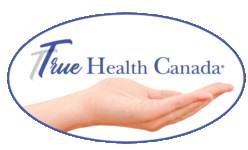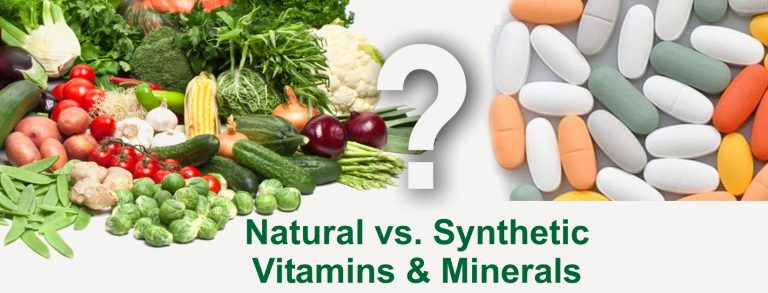We all know you can buy vitamins and minerals at the local grocery store, drugstore or at a health food store. Perhaps you thought that maybe the vitamins and minerals in the health food stores were in some way better or were higher quality? Or, perhaps you just assumed that the ones in the supermarket or drugstore are just as good?
You’re right- except for one thing, none of them are good for you, especially over the long term! How come?
More than 95% of the vitamins, minerals and antioxidants that you can buy at ‘health food’ stores and close to 100% of those sold in other stores are now made by the same few pharmaceutical and chemical companies who supply them to most all the vitamin and mineral companies.
They are no longer the ‘nutritional supplements’ they once were but are, more accurately, “nutraceuticals”. Once again, the drug companies, who realized some years ago that the best way to handle the threat of people getting better through real nutrition was to quietly take over the nutrition business, and are profiting from your deception.
People assume that Vitamin C from one brand is pretty much the same as Vitamin C from another. In many cases they’re right, since the Vitamin C came from the same original supplier.
What most people don’t realize, though, is that these vitamins and minerals are not true and complete vitamins as would be supplied by good organically-grown whole foods, but are in fact chemical synthetics made from such things as coal tar, petroleum products, animal by-products, waste and fecal matter, ground rocks, stones, shells and metal.
Not only do they not supply the benefits of the real vitamins and minerals, but they can actually be quite harmful to you when taken over time (especially in the mega doses so often recommended). Real vitamins only require minute doses to be effective.
Dr. Richard Schulze shares, “Many so called natural vitamins are made from horrible substances. All the vitamin B-12 cyanocobalamin on the market is made from either ground up toxic cow livers or activated sewage sludge. These cow livers are overloaded with steroids and antibiotics, and pesticides the cow assimilates from it’s food. The sewage sludge is just that, fecal matter. In today’s environment of depressed immune diseases I can think of hundreds of reasons that these materials would be a health risk, not benefit. Just because a so-called natural substance (fecal matter is natural) is high in a particular vitamin does that also mean it is a good food?”
Excuse me, ‘activated sewage sludge and fecal matter...?’
He continues, “Vitamin A from fish liver juices loaded with toxic PCB’s and mercury, B vitamins from coal tar and petro-chemicals, known central nervous system depressants, respiratory irritants, and carcinogens, Vitamin C from acid blends irritating to the lining of the digestive tract (Ascorbic Acid), Vitamin D from radiated oil, Vitamin E from Eastman Kodak, need I say anymore?”
“All minerals used in nutrient manufacture are basically dirt. The iron, calcium, zinc, etc. are just mined ore, pulverized and powdered to a fine dust. This doesn’t make it any easier to assimilate. Modern research shows that minerals of this type are 99% inassimilable. The manufacturers response to this is to add pig digestive enzymes, which supposedly pre-digests it or chelates it, in their attempts to force our body to accept this toxic material.”
Dr. Timothy O’Shea, author of “Conventional Medicine vs Holistic: A World of Difference”, points out:
“Vitamins are not individual molecular compounds. Vitamins are biological complexes. They are multi-step biochemical interactions whose action is dependent upon a number of variables within the biological terrain. Vitamin activity only takes place when all conditions are met within that environment and when all co-factors and components of the entire vitamin complex are present and working together. Vitamin activity is even more than the sum of all those parts; it also involves timing. Vitamins cannot be isolated from their complexes and still perform their specific life functions within the cells. When isolated into artificial commercial forms, like ascorbic acid, these purified synthetics act as drugs in the body. They are no longer vitamins and to call them such is inaccurate.”
Let’s take Vitamin C as a example.
It’s purchased as ascorbic acid. However, ascorbic acid is not Vitamin C. In fact, taken by itself can be quite irritating to the lining of the digestive tract. Complete Vitamin C is composed of many co-factors:
Rutin, Bioflavonoids Factor K, Factor J, Factor P, Tyrosinase, Ascorbinogen, ascorbic acid and other components. Each of these is vital to the complete biological activity enabling Vitamin C to function fully. Ascorbic acid is only a very small fraction of naturally occurring Vitamin C. Dr. O’Shea also points out, “In addition, mineral co-factors must be available in the proper amounts. If any of these parts are missing, there is no vitamin C, no vitamin activity.
He continues to explain that the ascorbic acid you buy at the grocery store every few weeks, is just a chemical copy of naturally occurring ascorbic acid, which itself is still only a fraction of the actual Vitamin C. Real vitamin C is part of something living, and therefore, can impart life. A synthetic, fractionated chemical ascorbic acid never grew in the ground, never saw the light of day, never was alive or part of anything alive. It’s a chemical, a cornstarch derivative, a sulfuric acid byproduct. In your body, it’s just another drug. Synthetic vitamins have toxic effects from mega-doses and actually can increase the white blood cell count. Whole food vitamins, by contrast, are not toxic since the vitamin is complexed in its integral working form, and requires nothing from the body and triggers no immune response.
“Whole food vitamin C, found in foods such as onions and citrus fruits, is able to quickly cure any case of scurvy. The fractionated chemical ascorbic acid has been shown to be insufficient in resolving a scurvy condition, simply because it does not act as a nutrient. (Lancet 1842).
Digging deeper just gets better.
More than 90% of ascorbic acid is manufactured in Nutley, New Jersey, by Hoffman-LaRoche, one of the world’s largest drug manufacturers. Most U.S. vitamin companies buy bulk ascorbic acid from this one company. Each vitamin company then makes its own labels and each usually claims to have a superior form, even though it all came from the same plant…and it’s not really Vitamin C in the first place!
The following are all chemical derivatives made in some pharmaceutical laboratory:
Acetate, palmitate, thiamine mononitrate, thiamine hydrochloride, thiamine chloride, pyrodoxine bydrochloride, cobalamin or cyanocobalamin, ascorbic acid, pycnogenols, irradiated ergosterol or calciferol, dl-alpha tocopherol, menadione, beta carotene and retinoic acid.
How many of these are true vitamins? None. These are in forms your body doesn’t know what to do with; especially in the absence of the synergistic minerals that enable the vitamins to work.
Have you heard of ‘expensive urine’? That’s where all these products are going. Your body eliminates them via the urinary tract in attempts to rid itself of the major quantity of foreign chemicals.
Dr. Judith DeCava explains, “Vitamin B1 as synthetic Thiamine (Thiamine HCL or Thiamine Mononitrate), will initially allay fatigue but will eventually cause fatigue by the buildup of pyruvic acid. This leads to the vicious cycle of thinking more and more Thiamine is needed, resulting or more and more fatigue along with other accumulated complaints…”
Natural food-source vitamins an enzymatically alive. Man-made synthetic vitamins are dead chemicals.
According to Dr. Shea, “In one experiment, synthetic vitamin B (thiamine) was shown to render 100% of a group of pigs sterile!”
In another study, synthetic Vitamin A actually was shown to cause an 8% higher incidence of fatal heart attacks, strokes and lung cancer, than those who took a placebo (sugar pill). As a dead, purified chemical introduced into the body, it further stresses the immune system, the liver, and the kidneys which all have to try to break down this odd chemical and remove it from the body. Synthetic vitamins actually have a net negative effect.
Here are some common synthetic vitamins to avoid:
- Vitamin A: Retinyl Palmitate
- Vitamin B1 (Thiamine): Thiamine Mononitrate, Thiamine Hydrochloride
- Vitamin B2 (Riboflavin): Riboflavin
- Pantothenic Acid: Calcium D-Pantothenate
- Vitamin B6 (Pyridoxine): Pyridoxine Hydrochloride
- Vitamin B12: Cyanocobalamin
- PABA (Para-aminobenzoic Acid): Aminobenzoic Acid
- Folic Acid: Pteroylglutamic Acid
- Choline: Choline Chloride, Choline Bitartrate
- Vitamin C (Ascorbic Acid): Ascorbic Acid
- Vitamin D: Irradiated Ergosteral, Calciferol
- Vitamin E: dl-alpha tocopherol, dl-alpha tocopherol acetate or succinate
NOTE: The “dl” form of any vitamin is synthetic.
Other Toxic Ingredients to Avoid In Supplements
- Magnesium stearate (or stearic acid)
- Monosodium Glutamate (MSG) disguised as “natural flavors” and about 25 other alias names
- Carnauba wax is used in car wax and shoe polish
- Titanium dioxide is a carcinogen
Learning to read and understand labels could change your life. You only have one body, take care of it.


